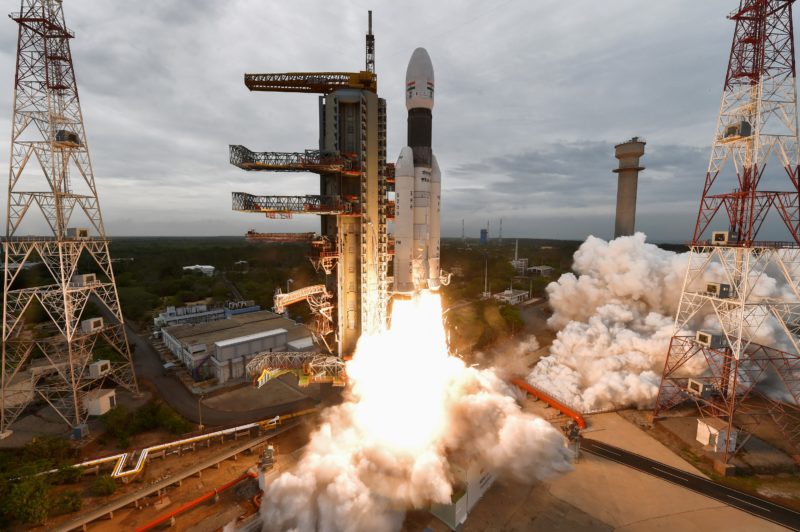India to land its ‘baby’ on the Moon
India’s Chandrayaan-2 mission, which blasted off on July 26, cost just $140 million (Handout)
New Delhi (AFP) – With Prime Minister Narendra Modi at mission control and millions more watching nationwide, India hopes this weekend to become only the fourth country to land a spacecraft on the Moon.
The unmanned mission though is about more than national pride, with scientists hoping for vital information enabling humans to stay on the Moon and use it as a pitstop on the way to Mars.
Vikram, the lander of Chandrayaan 2, is scheduled to touch down between 1:30-2:30 am on Saturday Indian time (2000-2100 GMT Friday). Around four hours later, the lunar rover should emerge.
But landing is a complex manoeuvre, with Kailasavadivoo Sivan, the head of the Indian Space Research Organisation (ISRO), calling it “15 minutes of terror”.
“It is like suddenly somebody comes and gives you a newborn baby in your hands. Will you be able to hold without proper support?,” Sivan told news channel NDTV.
“The baby will move this way, that way but we should hold it,” he said.
– South Pole –
Until now only the United States, Russia and China have successfully landed on the Moon, and India will be the first to land in the region of the lunar South Pole.
The rover will then explore craters there for clues on the origin and evolution of the Moon, and also for evidence on how much water the polar region contains.
According to Mathieu Weiss, a representative in India for France’s space agency CNES, this is vital to determining whether humans could one day spend extended periods there.
“India is going where probably the future settlements of humans will be in 20 years, in 50 years, 100 years,” Weiss told AFP, calling the Indian mission “exciting”.
And if people can survive on the Moon, then this means it could be used a pitstop on the way to Mars, the next objective of governments and private interests such as Elon Musk’s Space X.
– ‘Immensely proud’ –
The Indian mission has won plaudits abroad with the US State Department calling its launch in July “an incredible achievement!” while the European Space Agency sent congratulations.
Asia’s third-largest economy also hopes to secure lucrative commercial satellite and orbiting deals.
“Every Indian is immensely proud today!,” Modi had tweeted as mission control in Bangalore erupted in applause, handshakes and hugs.
“Special moments that will be etched in the annals of our glorious history!”
This time Modi, 68, fresh from a resounding re-election win in May after a campaign steeped in patriotism, will be flanked by youngsters who came top in a national space quiz.
Chandrayaan-2 also stands out because of its low cost of some $140 million. The United States spent the equivalent of more than $100 billion on its Apollo missions.
India is also preparing Gaganyaan, its first manned space mission, with the air force announcing Friday that the first level of selection of potential astronauts was complete.
Disclaimer: Validity of the above story is for 7 Days from original date of publishing. Source: AFP.


